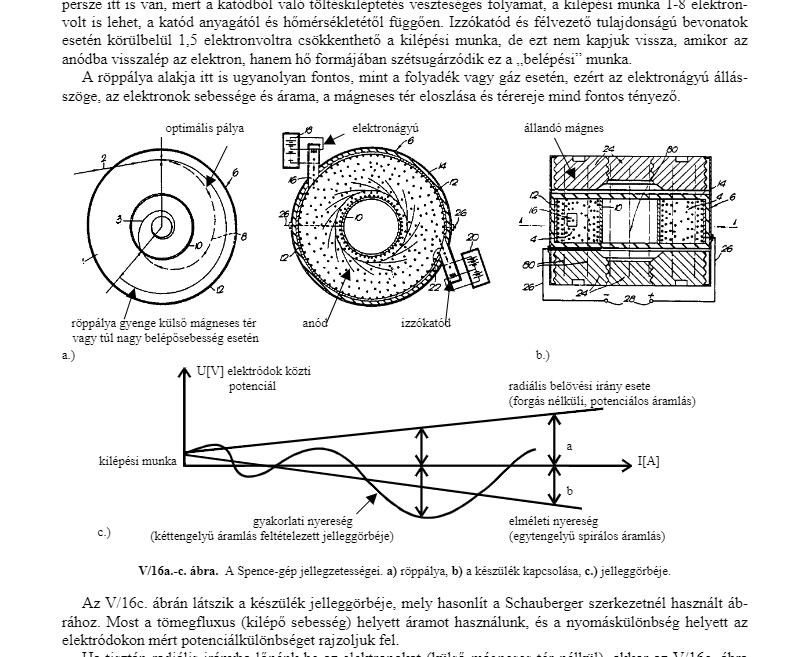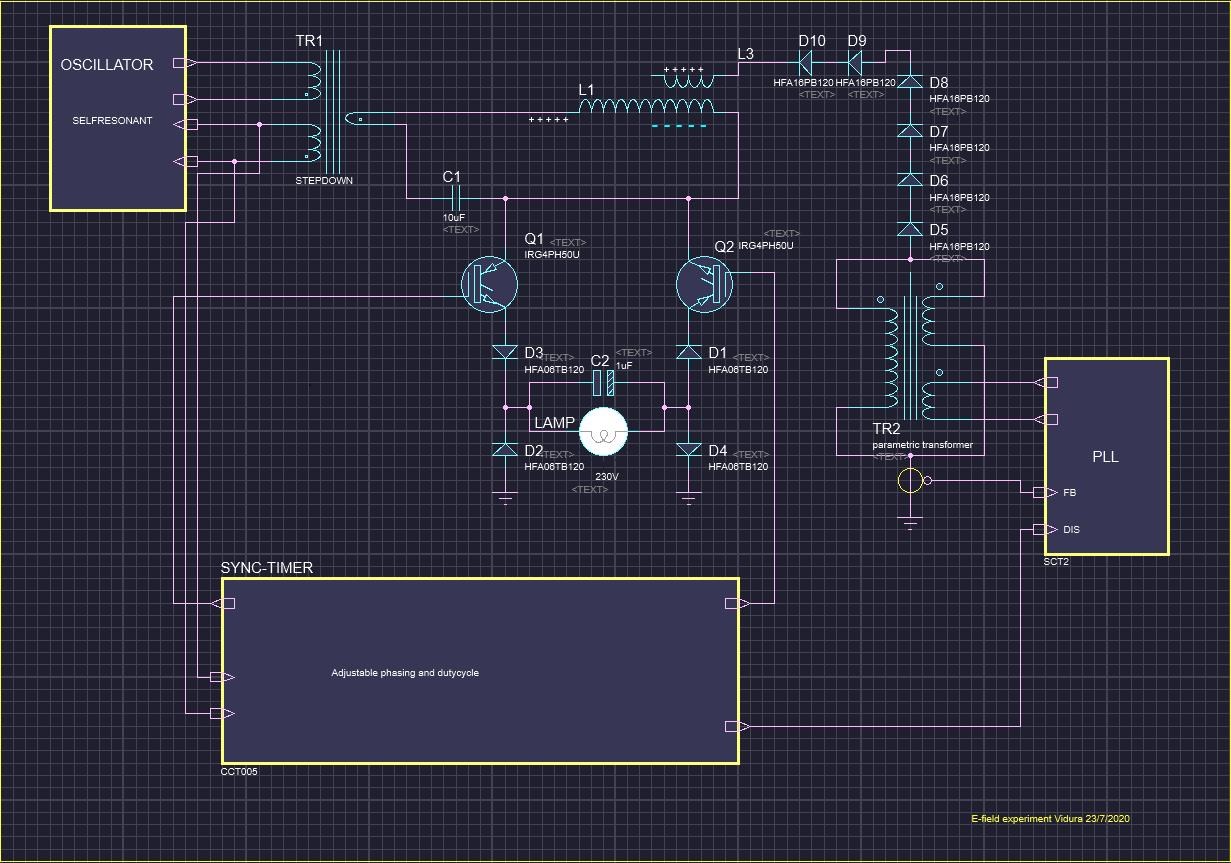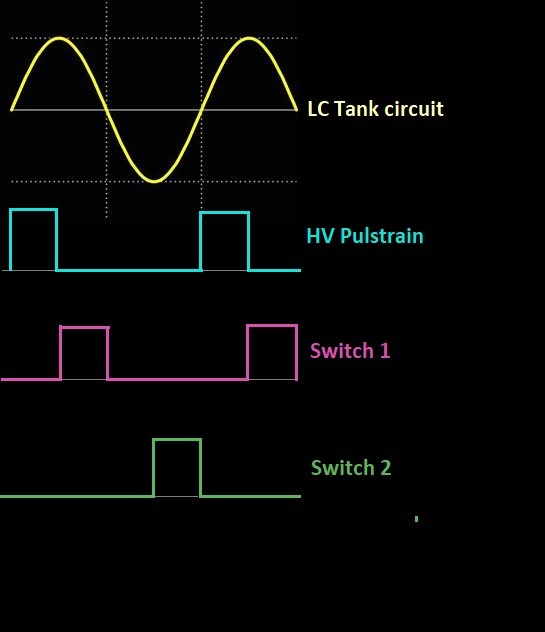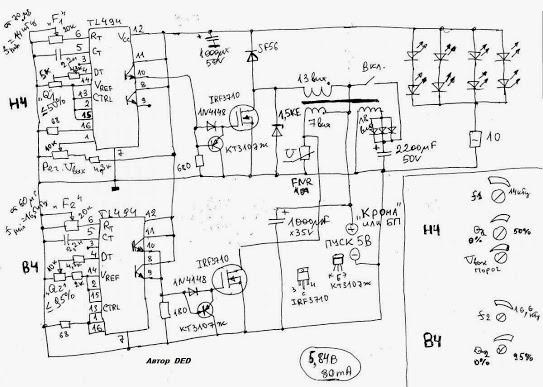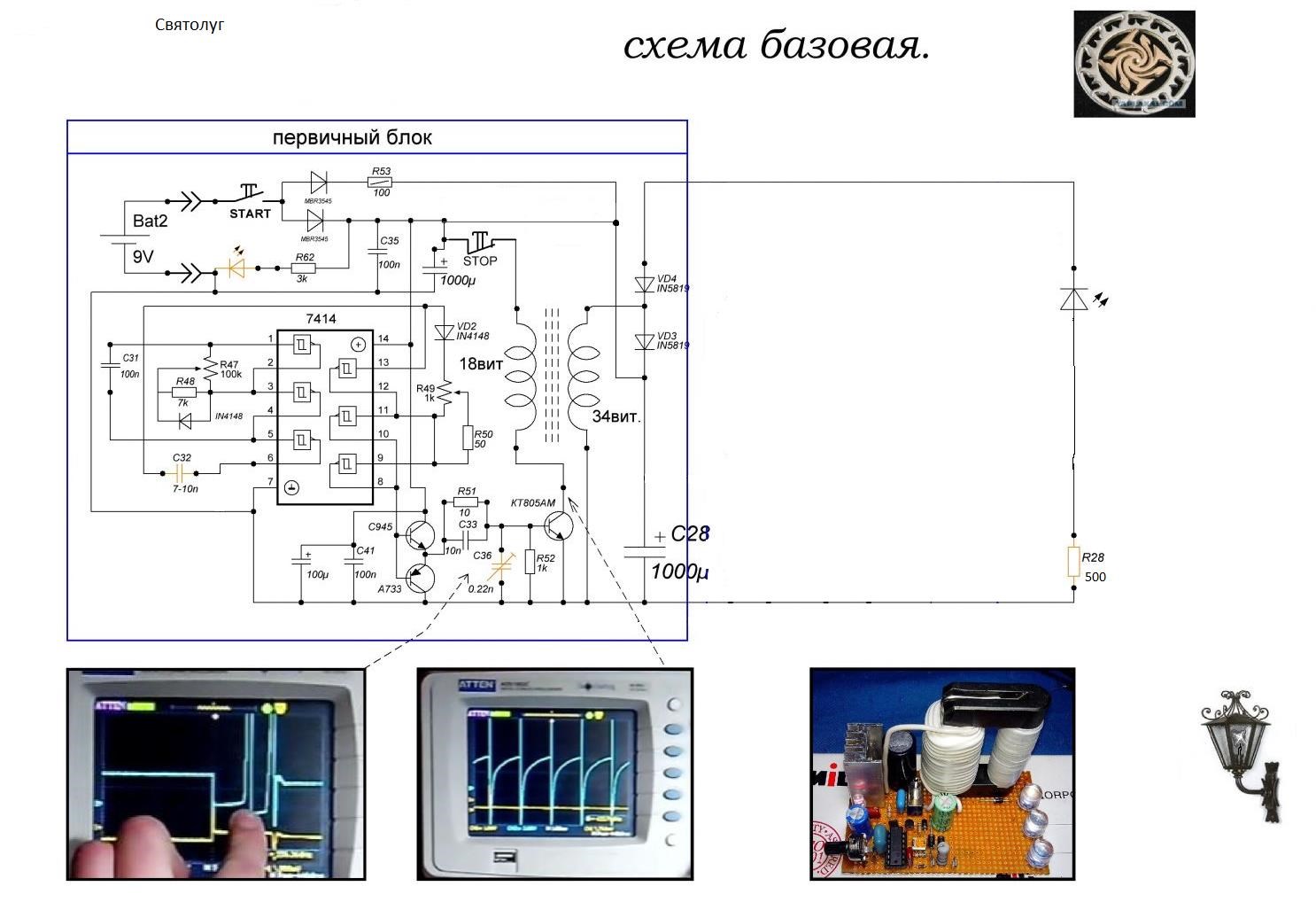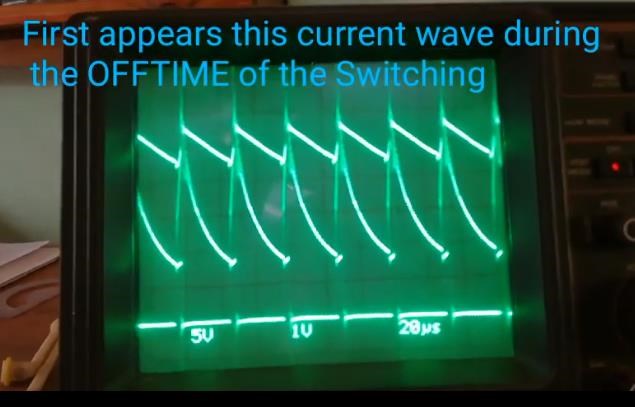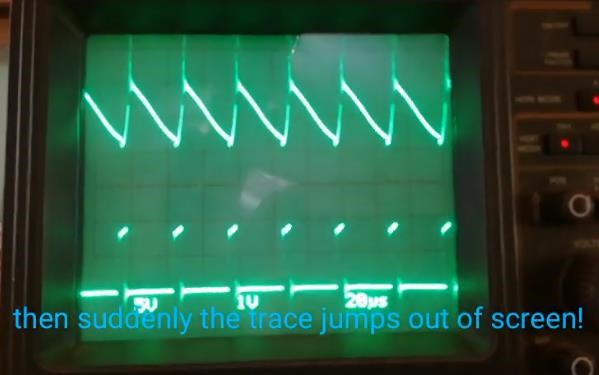Hello
Cause of a damage that occurred to my scope I was looking for some information about the CRT screen. This Inspired me to an interesting hypothesis about acceleration of electrons with electric fields, static or also oscillating. If we look at the construction of an cathode ray image tube we find different parts, a heated cathode, various other electrodes for the purpose of guiding and accelerating the electron beam inside the evacuated tube. A rough description of the principle would be that a heated cathode when reaching a threshold temperature will emanate "free electrons", in a gas like form, which are retained by another cylindric electrode surrounding the cathode, with a more negative potential than the heated cathode. The former has a small concentric orifice in the direction where the electron beam exit. At a greater distance there follow the anodes, attracting and accelerating the electrons, which are behaving as particles with mass and inertia. This is the reason why they don't merge into the positive anodes, but moving further thru the orifice of the anodes as a concentrated electron beam. This particular behaviour I found most interesting for our purpose of research, as there is a constant acceleration, without destroying the dipole, very similar to gravity, which is exercising a constant force to matter, making possible functioning hydroelectric power utilities.
Here a drawing of a CRO tube:
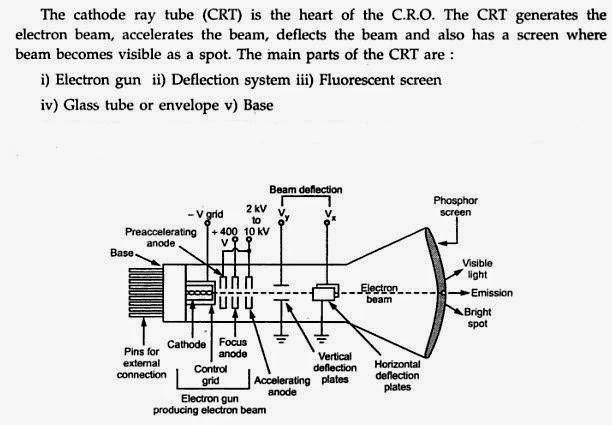
Some of the fast models have an additional metallic grid near the phosphorescent screen(not shown in the above image), as at high frequencies the traces become very pale, this grid provides secondary electrons which are dragged by the original beam, providing more brightness.
So far the theory of the CRO tube. Now, if we thing a bit about this principals, If we could disregard losses to a certain degree, such a device would not waste energy for the acceleration of the charged particles, only for the heater to free the electrons from the environment, or the matter, whatsoever. Nevertheless It becomes clear from most basic physical principals, that an accelerated particle has more energy than a "stationary" one. And the dipole responsible for the acceleration would not be destroyed, could theoretically continue accelerating particles as long as the potential difference is present. Similar as gravity in our hydroelectric plant.
Now the next step we would ask if this is only possible with static electric potential. I am convinced that basically a static or an intermittent E field are the same thing, even if the polarity would change the same forces apply. In the CRT the brightness of the image can be adjusted by the applied voltage on the accelerating anodes. It also could produce an intermittent ray with the according signal. A changed polarity of the E-field would presumably not be desirable for our task of energy harvesting, as a deceleration of electrons would be the effect.
We can see clearly that there are two different principals occurring in order to produce the beam:
- producing or detaching the electrons; 2. accelerating and concentrating them.
This leads me to the hypothesis, that it should be possible with the correct arrangement and parameters, to produce this effect, namely the acceleration of charged particles in an electric circuit loop, using conductors instead of an evacuated tube. As in the former example of the CRO tube, we would need to produce the same two principals. In first place detaching or setting free the charged particles, and second accelerate them using the E-field without destroying our dipole.
We have already some hints how to free electrons in a conductive circuit, as Chris has quoted Floyd Sweet:
"To free enough electrons to effect conversion would require magnetic forces approaching infinity."
A strong magnetic field(varying in time) can free the electrons. Also the incidence of light-radiation on certain materials can do the same. High temperature in case of the evacuated tubes also, there might be other ways.
Once we have "generated" the electrons in our circuit, we should be able to accelerate them by means of the E-field. Actually we are doing this all the time, but mostly we destroy the source dipole by the way. So the basic Idea in this hypothesis is that it should be possible to use the force of the E-field without depleting it's source.
In this place I will recall the basic principles of electrostatics:
1.Charge separation by an electric field(electrostatic).
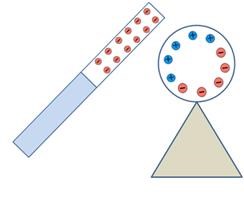
2.Discharge of negative charges to ground:
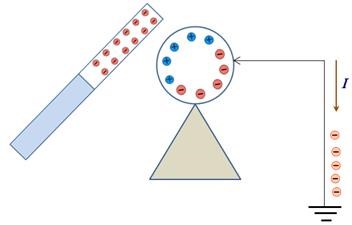
The object remains charged positive:

Now the positive charges are drained to ground:
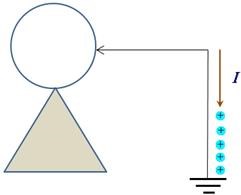
Note: at both discharge cycles a load can be connected and thus work is performed. Some might have doubts about the existence of positive charges, but this is not the subject of this discussion, you can also imagine that positive charge exist as lack of electrons and these return into the object from ground at the second discharge.
Here an experiment performed by Sergei Deyna which can be watched in the following video at minute 20:09, I want to give credit to Him for his excellent research on the subject.
Here some images from the setup:
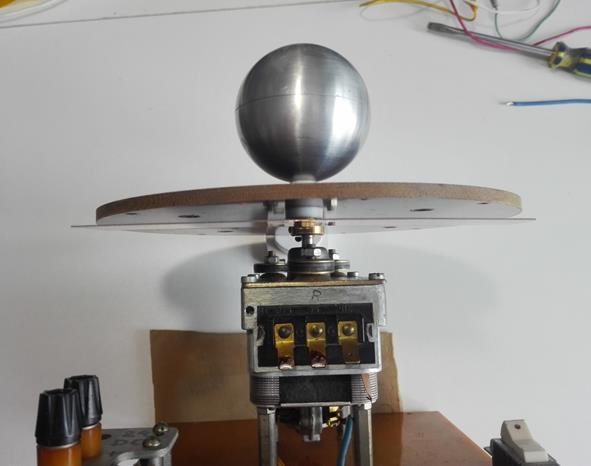
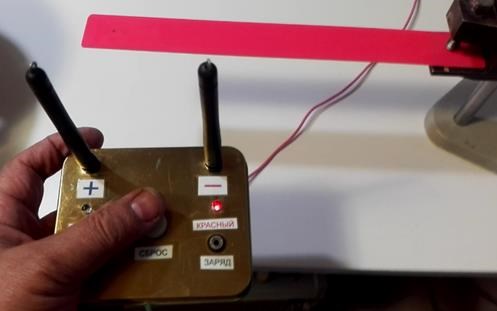
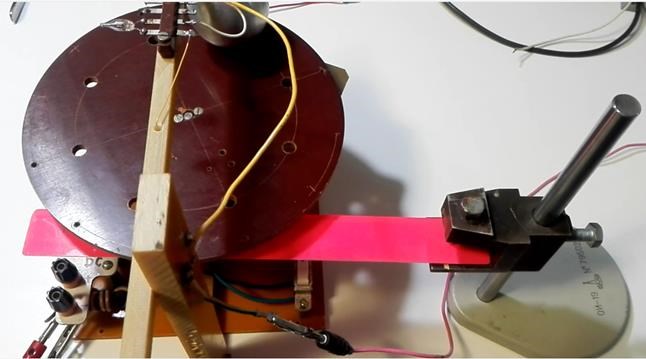
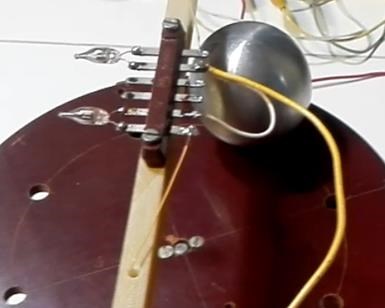
Электростатика - 3. Принцип использования свободной энергии:
There was an earlier experiment where the test was performed manually, and after a couple of discharges the audience was asked how many times the discharges would be repeatable with a single charge of the plastic ruler. So as an answer this setup was built, and actually it works for indefinite time until the static charge of the ruler vanishes.
Now we could go a step further and think about how we could employ this principal in an oscillating resonant circuit, in this case our E-field of course would have to be intermittent in phase with the resonance frequency. We know various methods' to produce E-fields of great intensity with a very low expense of input power, as examples Tesla coils in the lower power range, such as slayer exciters, or also parametric oscillators with opposing magnetic fields(remember: cancel H and get 2E). Also BEMF pulses could likely be suitable to setup the required E-field.
Earlier I have posted some theory about the principals of some of Akulas and Ruslans devices here.
Hopefully this thread will shed some more light on this.
Regards Vidura.






